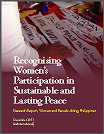The roads may cleared and embers may have died down but the distrust among neighbours has never been this overwhelming in Xinjiang. While it may be late to set the record straight on the causes of the riots, fair reportage can still salvage diverse narratives of the event without stimulating unnecessary grief and anger by choosing to magnifying some narratives and stymieing others.
As of today, the number of deaths is pegged at 197 while that of injured civilians, 1,721. Since clashes broke out on 5 July 2009, Western news agencies immediately pointed to the cultural marginalisation of Uigyurs and the huge socio-economic divide that separates them from the Hans. They likewise looked back to the Uighyurs' grand history which has been subsumed by communist China and the county's current capitalist drives. Meanwhile the blame was pointed to the government and its brutal ways of dispersing dissent.
But there is another side of every story and there are much more angles within a single story. Indeed majority of the first 144 deaths were Hans but these were not the makings of the rebelling Uigyurs nor the police's retaliation alone. It was the result of the first four hours of the government's inaction.
Li Jinsong, a media professional shared that even as the protest in Urumqi turned into a violent rampage, the police chose not to act until the situation became worst. “Why did it have to take that long before the government responded to the situation,” he said.
It is assumed that such overdone restraint is due to the growing consciousness among Chinese authorities against the negative media backlash and the very touchy issues concerning China's minorities. But in the end, the foreign mainstream media still finds the government and the Hans as the major culprits of the recent events.
While most media pointed out the concentration of Uigyurs in lower economic strata, it failed to mention that minorities are also given privileges in social services such as education without the processes that a Han typically undergoes.
Learning from the riots in Tibet, shortly before the recent Beijing Olympics, China has opened Xinjiang to foreign journalists,. But according to reports of Al Jazeera, the journalists are often guided by the Chinese authorities to certain spots and are not that free to roam the streets of Urumqi.
But much remains to be desired in facilitating media freedom and access to information even within the mainland. Li lamented the difficulty in accepting the immediate cause of the violence. Some alluded to a conspiracy from Uigyurs in the diaspora while some others pointed to the graphic images of the Uigyur fatalities in a brawl in a toy factory in Shaoguan in Guangdong province. “People must get the right information and not just rumours which could only ignite horrific violence,” Li asserted.
Even after foreign media leaves the country, Urumqi will become yet another town to be watched and a town where residents watch each other. With the scale of the violence, it might take years before peace and confidence among communities. But with the current state of the media freedom and information flows, there is reason to believe that this process will take even longer.
Sources:
Interview with Li Jinsong, 15 July 2009
All China Women's Federation (8 July 2009) “Uygur Woman Worker in Guangdong Condemns Urumqi Riot. ”
Al Jazeera (7 July 2009). “China's changing approach to reporting Xinjiang.”
________(19 July 2009). “China says Uighurs killed in riots”
________(7 July 2009). “Exiled Uighur leader denies stirring unrest.”
China Daily (7 July 2009). “Victims in toy plant brawl condemn Xinjiang riots.”
Kai Pan (8 July 2009). "Urumqi Riots, Western & Chinese Narratives, & Truths In The Middle."





 The
The 
 Isis Resource Center holds one of the largest feminist collections of materials in the Global South. With 40 years of publication experience, Isis holds a vast collection.
Isis Resource Center holds one of the largest feminist collections of materials in the Global South. With 40 years of publication experience, Isis holds a vast collection.